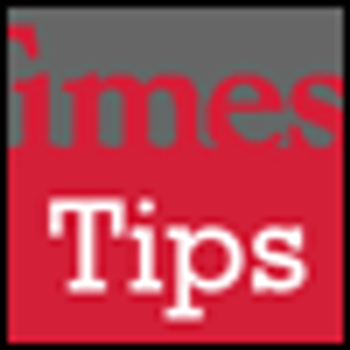
Narcolepsy, cataplexy: symptoms are broad and associated with a range of medical and psychiatric comorbidities. Here: diagnostic and treatment strategies and a look at the BOND study.

Narcolepsy, cataplexy: symptoms are broad and associated with a range of medical and psychiatric comorbidities. Here: diagnostic and treatment strategies and a look at the BOND study.

A book that may help doctors, as well as their patients, better understand how they tick, literally, in our 24/7 society, and find a balance between difficult temporal demands and somatic and mental health.

More than half of all patients with psychiatric disorders report disturbances of sleep and wakefulness. "Sleep disorders are associated with impaired daytime function and predict a heightened future vulnerability to psychiatric disease. They also diminish life span.” Details from an expert here.

This brief review addresses what is currently known about sleep problems in women. The main focus is on sleep issues that are particularly relevant to reproductive stages in a woman’s life cycle and therefore potentially linked to reproductive and/or hormonal factors.

Astrocytic signaling to adenosine receptors results in the robust reduction of depressive-like behaviors associated with sleep deprivation.

Psychiatric disorders, such as primary sleep disturbances, depression, substance abuse, mania, sexually inappropriate behaviors, and psychosis, can complicate the care of patients with dementia.

Insomnia-a sleep disorder that can pose impairments far more debilitating than than problems with cognition (eg, difficulty processing, unclear thinking).

What are the options for treating major depressive disorder in children and adolescents? This case offers readers a chance to give their feedback and to interact with the authors, who will present teaching points based on your comments.

What is sleep normally and what are the primary factors that regulate sleep? Understanding that the primary factors that regulate the sleep wake cycle are homeostatic and circadian will help clinicians assess sleep problems in patients.

Sleep-disordered breathing is common in patients with mood and anxiety disorders. This article explores the implication for practicing psychiatrists whose patients have sleep disorders.

Melatonin has a role in psychiatric illness and the treatment of circadian rhythm sleep disorders, insomnia, and comorbid depressive disorders.

Although the purpose of sleep continues to be the subject of much debate, few would argue that a well-functioning sleep-wake cycle is essential for good health.

Knowledge of how different antidepressants are likely to affect parameters of sleep can provide an important basis for selecting an appropriate antidepressant drug among the roughly 2 dozen marketed options to meet the needs of depressed patients.

Sleep changes associated with psychotropic drugs are common enough to justify routinely obtaining a baseline sleep diary before beginning treatment, even when the initial screening for sleep disorders indicates that no further investigation is needed.

Sleep disorders - most commonly sleep apnea - are often comorbid with psychiatric disorders. Treatment of disordered sleep can result in a significant improvement in the psychiatric disorder.

Can you name an important part of good sleep hygiene? The use of which short-acting sedative-hypnotics to treat sleep disturbances in patients is associated with Alzheimer disease? These questions and more.

How often do insomnia and anxiety disorders coexist? And how best to treat patients with comorbid insomnia and anxiety? Answers here..

Are a history of complicated pneumonia and possible obstructive sleep apnea part of the DSM-IV exclusionary criteria for potential participants in anesthesia-assisted opioid withdrawal? How many alcoholic drinks a week does it take for a woman to be considered an at-risk drinker? These and more in this week's quiz.

During my medical training in the early 1980s, I attended a Grand Rounds on health care reform. Sleep-deprived physicians-in-training are easily conditioned to snooze upright in their auditorium seats, and economics is not an interest of choice for me, but when the speaker told us that there would be no solution to rising health care costs except to fracture the bond between patient and doctor, I found myself engaging in nightmarish fantasies that in subsequent decades have come true.

What do we know about circadian rhythms and melatonin? And what further lessons do we need about circadian rhythms, light exposure, and melatonin to help our patients with disturbed sleep/wake cycles?

Simple but powerful suggestions to get a better night's sleep.

Pediatric bipolar disorder (PBD) is a serious psychiatric illness that impairs children’s emotional, cognitive, and social development. PBD causes severe mood instability that manifests in chronic irritability, episodes of rage, tearfulness, distractibility, grandiosity or inflated self-esteem, hypersexual behavior, a decreased need for sleep, and behavioral activation coupled with poor judgment. While research in this area has accelerated during the past 15 years, there are still significant gaps in knowledge concerning the prevalence, etiology, phenomenology, assessment, and treatment for PBD.

Restless legs syndrome (RLS) is a neurosensory disorder first described by Sir Thomas Willis in 1672. As early as the 19th century, Theodor Wittmaack observed the comorbidity of RLS with depression and anxiety. He termed this condition “anxietas tibiarum” and believed it to be a form of hysteria.

As we begin this brief review of the neurobiology of major depressive disorder (MDD), we face these fundamental questions

Depression is an insidious, ugly beast, creeping into the mind over time until one is engulfed and powerless, feeling only a sense of futility and heaviness. In my case it came some months after I had had to retire from a fruitful and enjoyable academic neurodevelopmental pediatrics practice, because of onset of a degenerative neuromuscular disease. My depression was manifested mainly by weight loss, poor affect, anger and irritability, fitful sleep, and thoughts of suicide. Luckily, my primary physician recognized the signs immediately and recommended both pharmacotherapy and psychotherapy. For both therapies and for this physician, I am extremely grateful. However, in this essay, I will speak of the ways I experienced psychodynamic psychotherapy and its ramifications into many parts of my life.